Rubber expansion joint
is a flexible connector to absorb noise, shock, vibration, physical and thermal energy.
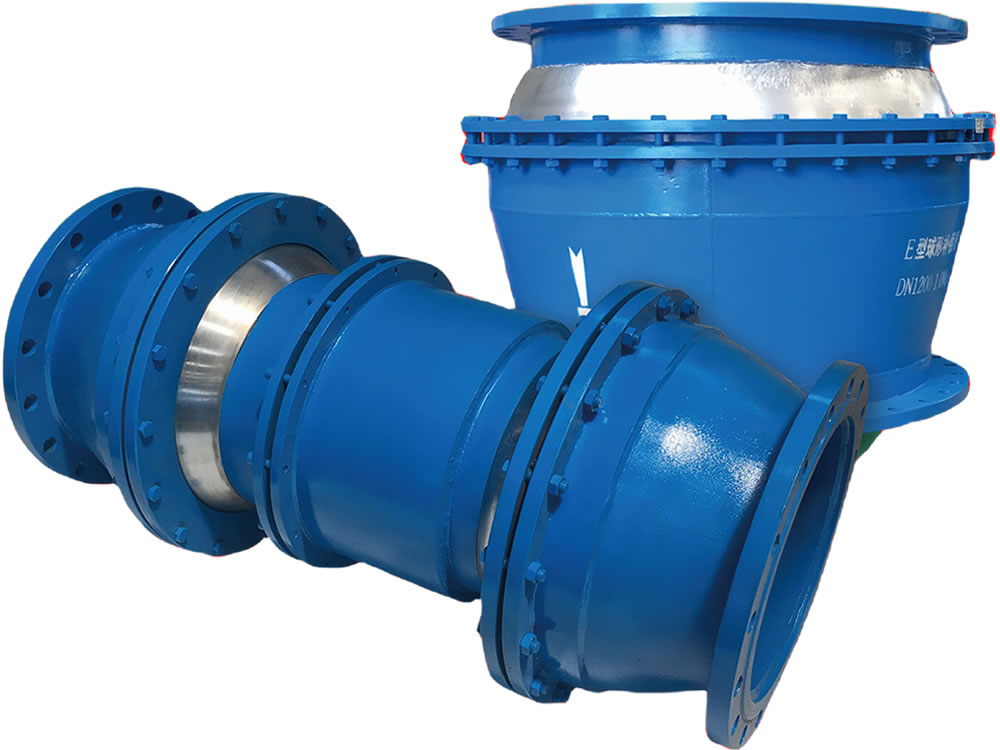
A flexible expansion joint, also known as a rubber expansion joint, is a component used in piping systems to accommodate movement, vibration, and thermal expansion.
Originally, steel expansion joints were used to absorb movement. With development of synthetic fibers, it was possible to make a flexible connector which permitted movement in all directions.
Download PDF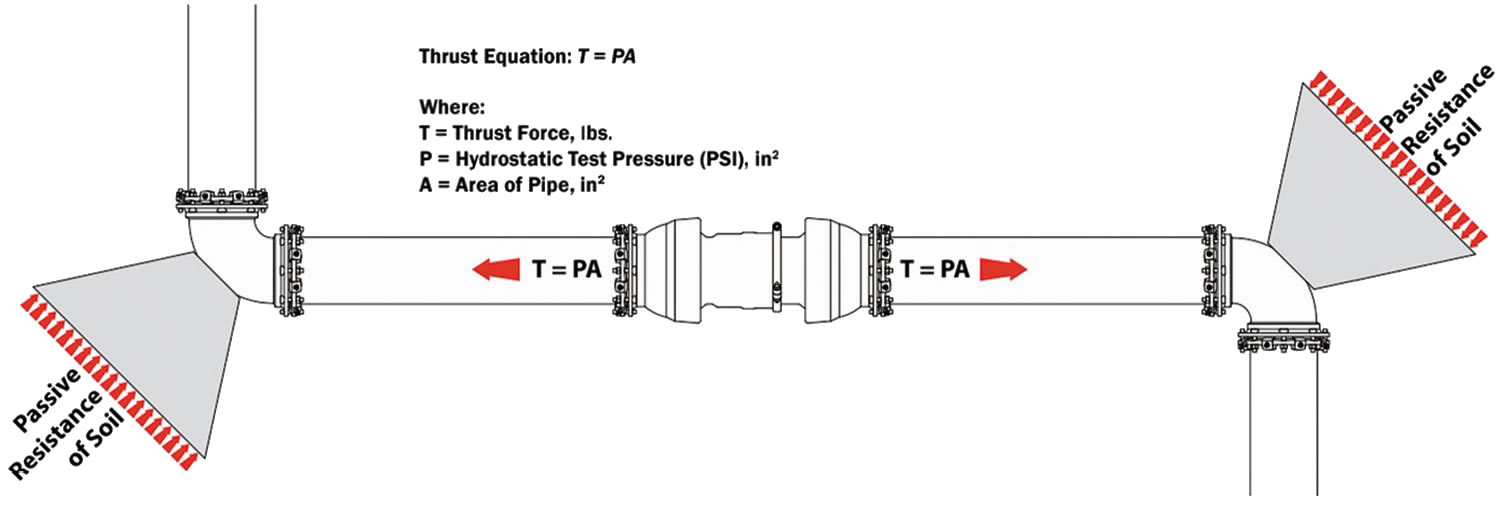
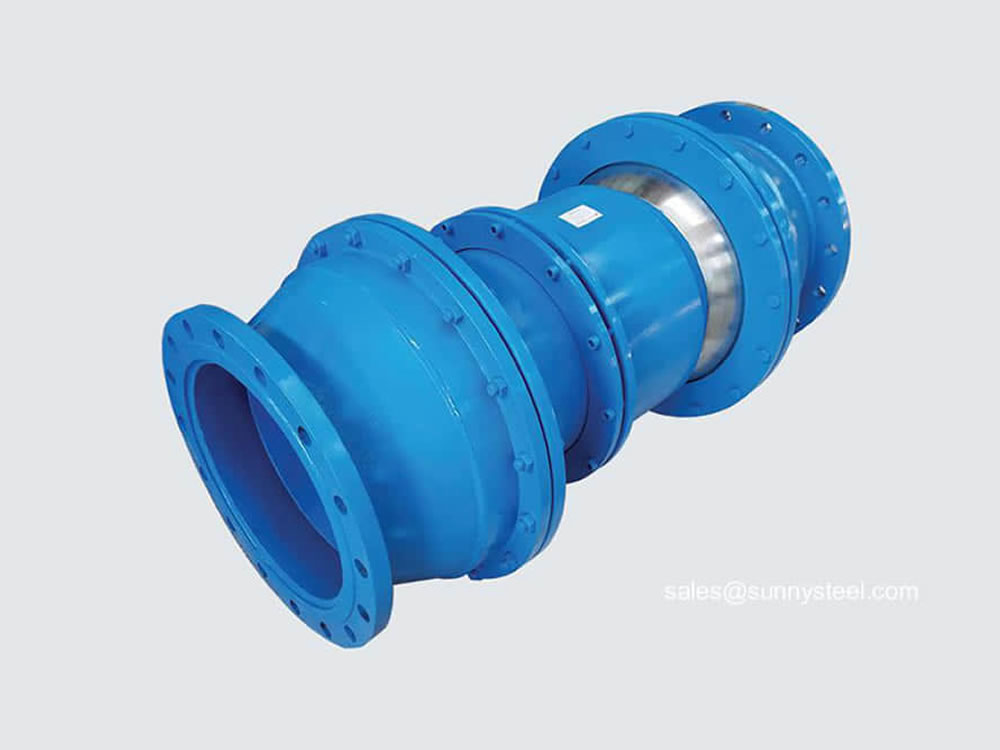
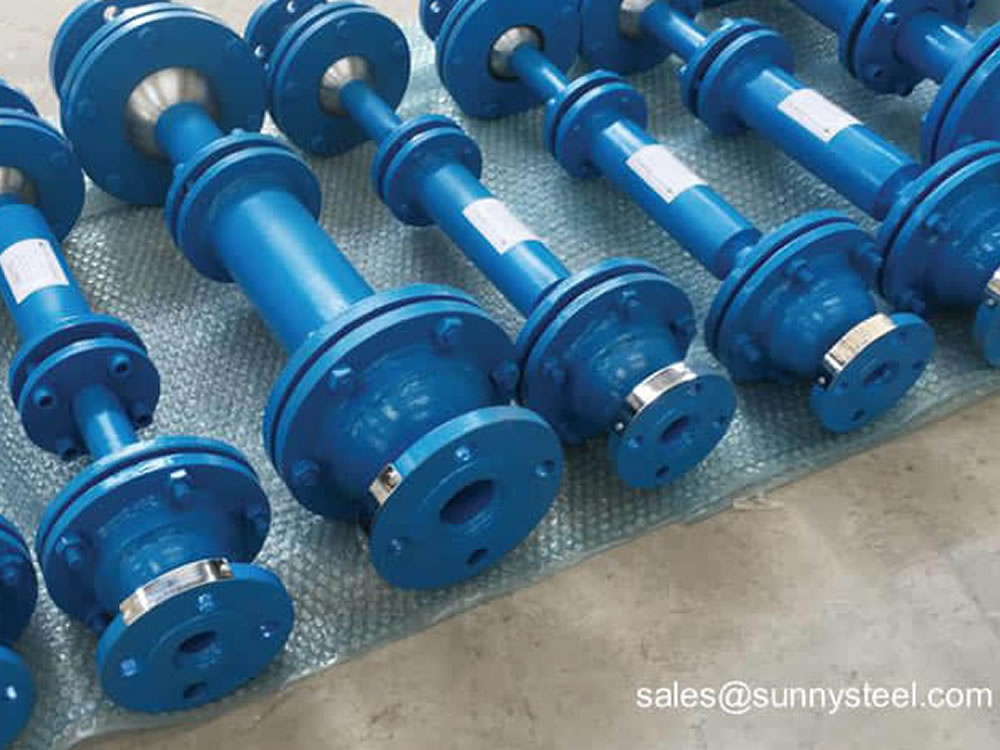
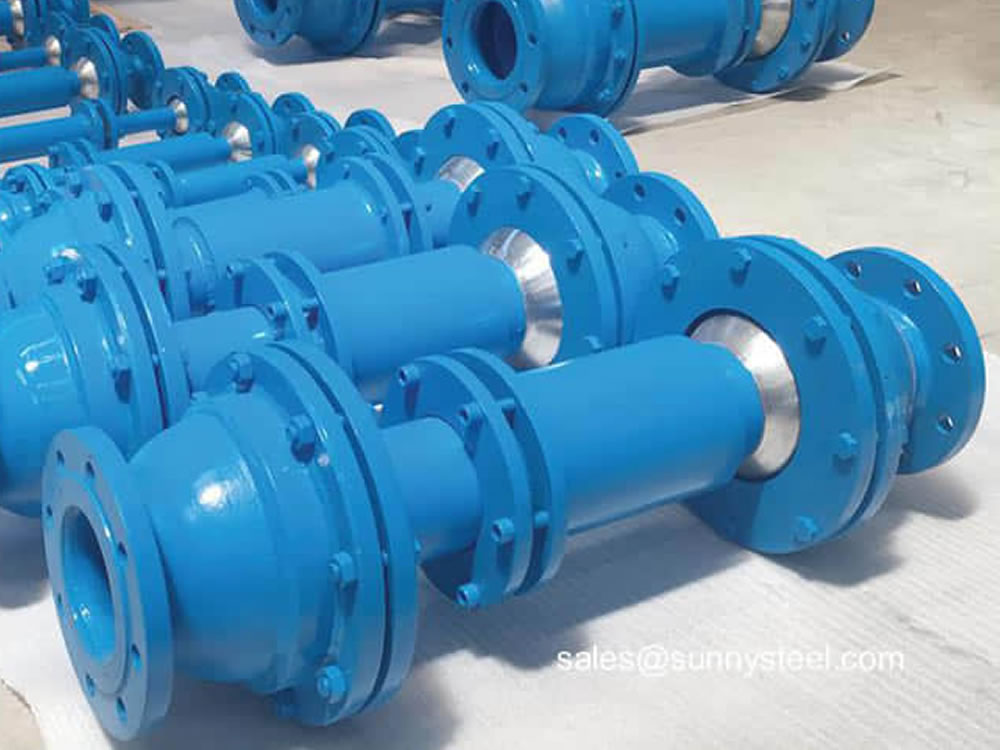
Using rubber in expansion joints offers several advantages over other materials. Not only are they flexible and high strength, but they are durable and able to resist thermal expansion and contraction more than other materials.
Flexible expansion joints behave similarly to other expansion joints under pressure. Due to their design, expansion joints generate end thrust when subject to internal pressure, as seen in Figure 1.1. This end thrust must be accounted for in pipeline design. The end thrust generated is calculated by multiplying internal pressure (PSI) by the area listed in Table 1.1.
When used in a long and relatively straight pipeline, the pipe-to-soil friction is generally sufficient to balance the force. The use of thrust blocks or other means of anchoring is required when fittings are placed in close proximity to the expansion joint underground. This protects the pipeline from the tendency of the unit to expand when pressurized. In an above-ground installation such as a bridge application, some means must be provided to prevent the expansion of bridge application, some
| Size (inch) |
Arce (inch2) |
Thrust@150 PSI(lb) |
|---|---|---|
| 2 | 4.43 | 664.5 |
| 3 | 12.3 | 1845 |
| 4 | 18.1 | 2715 |
| 6 | 37.4 | 5610 |
| 8 | 64.3 | 9645 |
| 10 | 96.8 | 14520 |
| 12 | 136.9 | 20535 |
| 14 | 237.8 | 35670 |
| 16 | 237.8 | 35670 |
| 18 | 366.4 | 54960 |
| 20 | 366.4 | 54960 |
| 24 | 522.8 | 78420 |
| 30 | 804.3 | 120645 |
| 36 | 1152.1 | 175815 |
| 42 | 1555.3 | 233295 |
| 48 | 2027 | 304050 |
Table 1.1
The successful installation of expansion joints in a pipe system Requires the careful consideration of many variables. The most important issue is to establish the direction in which the movements are acting and in which way the movements should be absorbed. Once this information is known, the solution incorporating the most suitable expansion joint type(s) can be determined. The following pages give some ideas and suggestions for a pipe system design, and how to implement expansion joints in the system in the Best way.
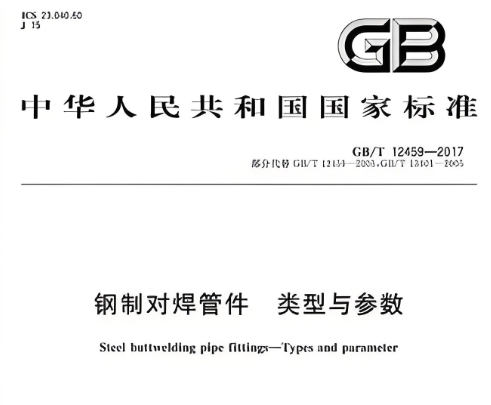
GB/T 12465-2017 is the Chinese national standard titled "Piping Compensatory Couplings."
This standard specifies the classification, marking, requirements, testing methods, inspection rules, marking, packaging, transportation, and storage of piping compensatory couplings with flange connection sizes and sealing surfaces according to GB/T 9112-2010 (PN series). It is applicable to the design, manufacture, and acceptance of compensatory couplings for pipelines that transport seawater, freshwater, cold and hot water, drinking water, domestic sewage, crude oil, fuel oil, lubricating oil, finished oil, air, gas, steam at temperatures not exceeding 205°C, hot gases, and particulate matter. The standard is under the jurisdiction of the National Ship Machinery Standardization Technical Committee, with the State Standardization Administration as the administrative authority. Drafting units include Wuxi Golden Sheep Pipeline Accessories Co., Ltd. and China Shipbuilding Industry Comprehensive Technology and Economy Research Institute, among others.
These joints are designed to provide flexibility and compensate for changes in the system, reducing stress on the pipes and preventing damage or leaks.
A flexible joint is a coupling which can transmit torque between two shafts which are not aligned. A flexible joint between the shafts corrects any misalignment. A flexible joint allows some movement between the steering shaft and the steering box.
The installation of Flexible Expansion Joints is currently in progress as below:
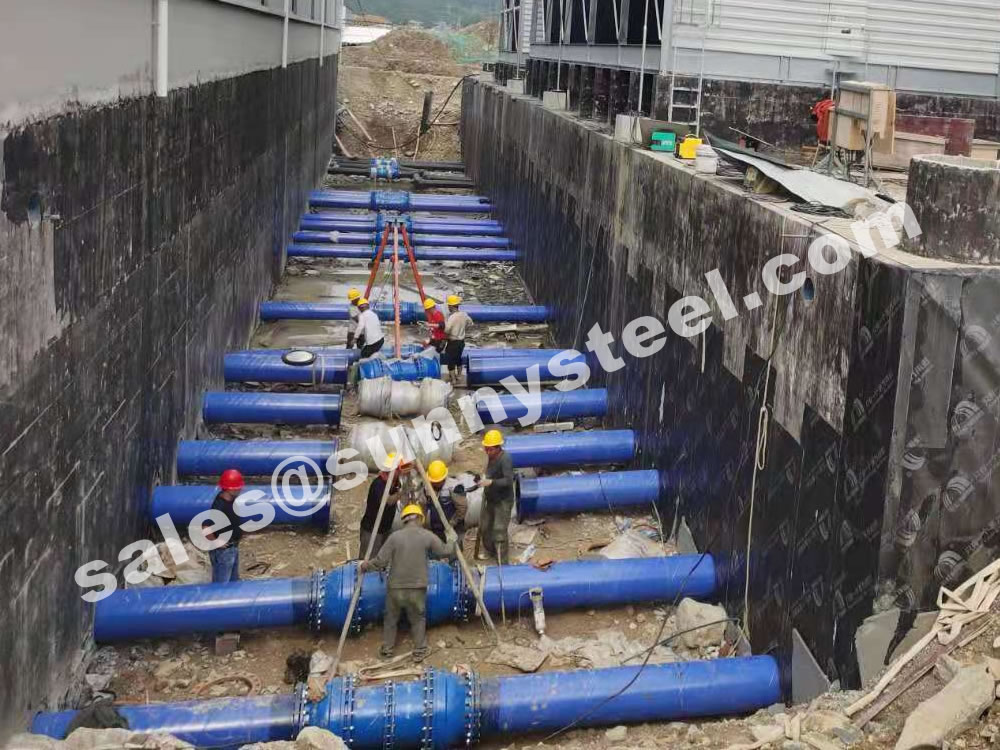
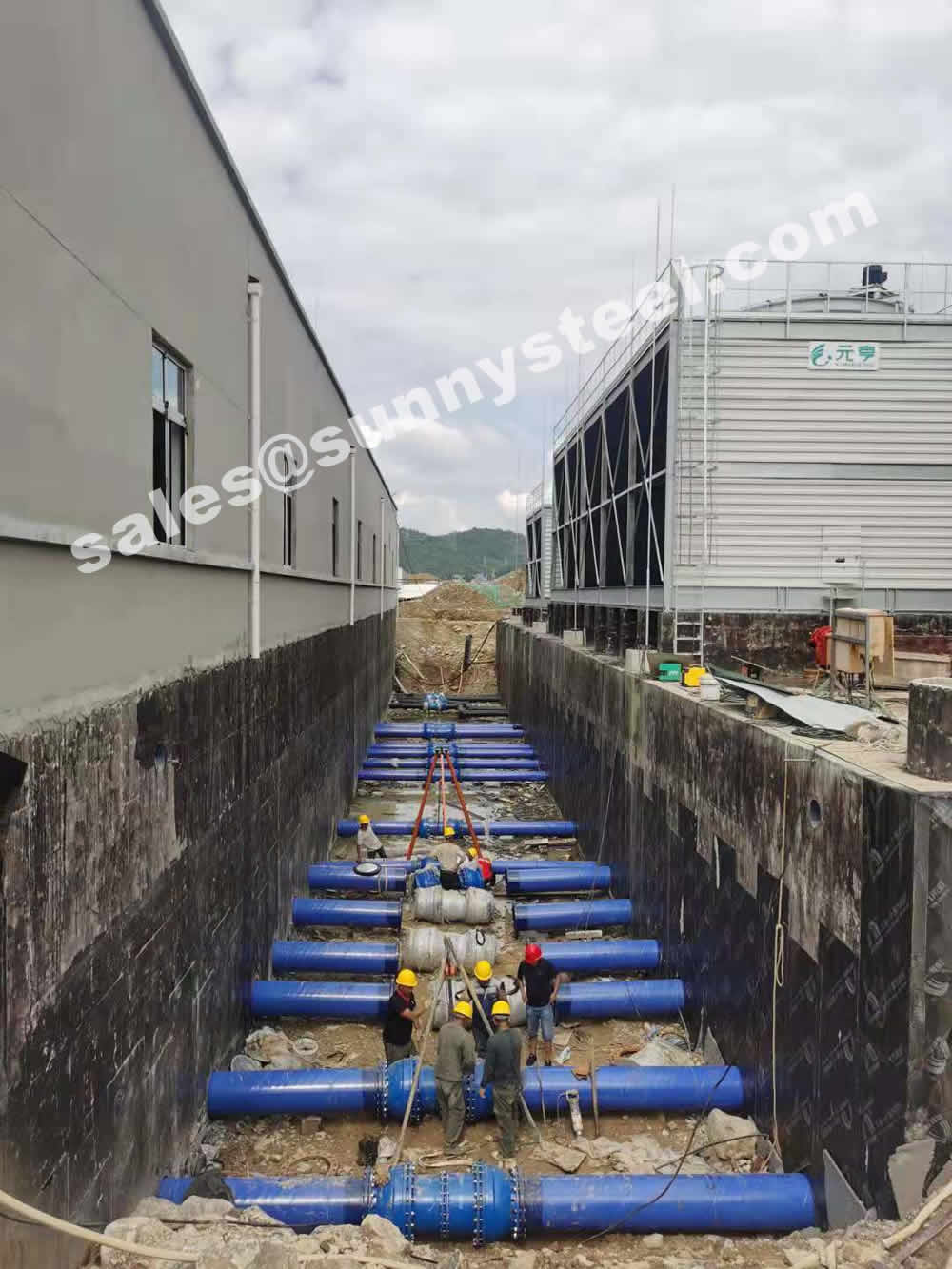
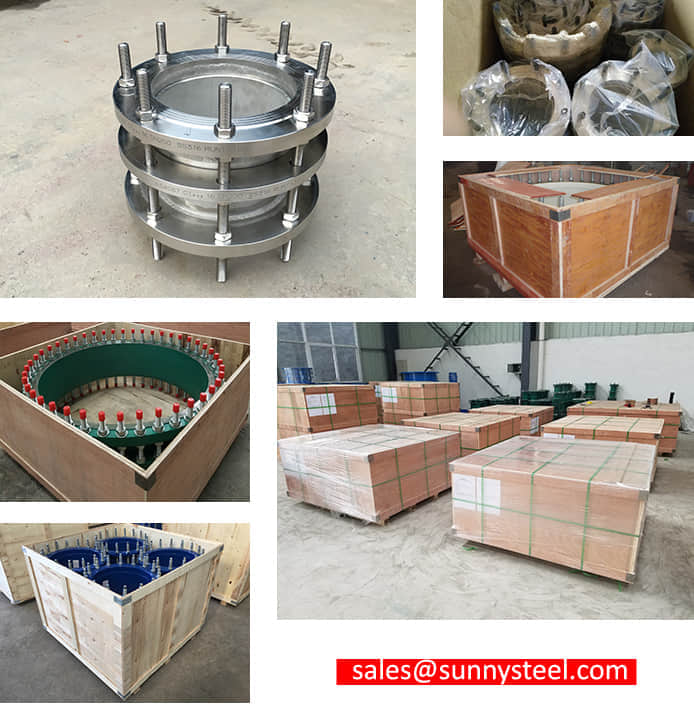
Inner plastic film packing, outer standard export wooden case packing.
Courier company transport, air freight and sea transport. It depends on your actual order details and quantity.
Our team of experienced sales specialists proudly partners with gas and chemical processors, power generation plants, oil refineries, and related industries to offer piping components and value-added services.
Q: How can you guarantee the quality or any warranty?
A: Check the specification, material and appearance before delivery, and approve the delivery after qualified.
B: Support third-party inspection.
Q: What can we do for you?
A: we support OEM/ODM,we can provide drawings,technical support,installation maintenance.
Q: Can you provide samples?
A: Yes, we generally provide samples with a diameter of 100 or less, and you need to bear the freight of the samples
Q:What information do I need to provide if I want an accurate quote.
A: Please confirm the product, material, working pressure, connection method, flange standard, medium and quantity.
Q: Do you accept small quantity order?
A: Of course we do.
Q:what are your payment term?
A: After receiving T/T 30% payment, start production; Remaining 70% paid before delivery
Q: Where is your nearest loading port?
A: Shanghai, Qingdao or Tianjin, China.
Q: When is your shipping and delivery time?
A: By sea or air. Normally 7 to 14 Days for delivery, according to your order quantity.
An expansion joint is a useful component in an infinite number of applications. Metal expansion joint assemblies are commonly used for all kinds of industries and applications including:
Expansion joints are often installed near boilers, heat exchangers, pumps, turbines, condensers, engines and in long pipe systems or pipe ducts.
Expansion joints come in a wide variety of designs. Some of them are standard and some are customised as per client requirements.
Although their design may vary significantly, all expansion joints are nevertheless composed from some of the following components, all with one or more specific functionalities: bellows, welding ends, flanges, hinges, tie-rods, spherical washers, wire mesh, insulation, inner sleeve, external cover, elbow and/or ring reinforcement/equalizing rings.
In general, there are fabric, metallic, and rubber expansion joints.
In a piping system a Expansion joints alternately known as Bellows are like sealed springs. Sealed because it is required to contain the fluid pressure which is flowing through it and spring because it is required to respond to the movement of the connected piping without offering appreciable stiffness to the piping system.
The Bellows are generally employed in a piping system in one of the following situations:
An expansion joint or movement joint is an assembly designed to safely absorb the heat-induced expansion and contraction of construction materials, to absorb vibration, to hold parts together, or to allow movement due to ground settlement or earthquakes.
They are commonly found between sections of buildings, bridges, sidewalks, railway tracks, piping systems, ships, and other structures.
Expansion joints – sometimes called expansion bellows, flexible joints or Expansion joint – are devices that comprise of a flexible element known as the bellows membrane that is fitted to end connections that are best suited to the pipework they are to be installed in.
Most bellows membranes are manufactured from stainless steel and are made up of a series of convolutions manufactured to withstand the pressure of the system but also must be suitable to accept the movements for which they are designed. The bellows membrane comprises of a series of convolutions designed to withstand the internal pressures of the system, but at the same time flexible enough to accept axial, lateral and angular deflections.
The joint needs to be a highly resistant nature so it’s necessary to make sure that it’s far thicker than you’d expect. In turn, this slows down any effects of potential corrosion as although it may be affected by the elements over time, it will still retain its density.
Expansion joints are required in large ducted air systems to allow fixed pieces of piping to be largely free of stress as thermal expansion occurs.
Bends in elbows also can accommodate this.
Expansion joints also isolate pieces of equipment such as fans from the rigid ductwork thereby reducing vibration to the ductwork as well as allowing the fan to “grow” as it comes up to the operating air system temperature without putting stress on the fan or the fixed portions of ductwork.
An expansion joint is designed to allow deflection in the axial(compression) or laterally (shear) or angular (bending) deflections. Expansion joints can be non-metallic or metallic (often called bellows type). Non-metallic can be a single ply of rubberized material or a composite made of multiple layers of heat and erosion resistant flexible material.
Typical layers are: outer cover to act a gas seal, a corrosion resistant material such as Teflon, a layer of fiberglass to act as an insulator and to add durability, several layers of insulation to ensure that the heat transfer from the flue gas is reduced to the required temperature and an inside layer.
A bellows is made up of a series of one or more convolutions of metal to allow the axial, lateral or angular deflection required.
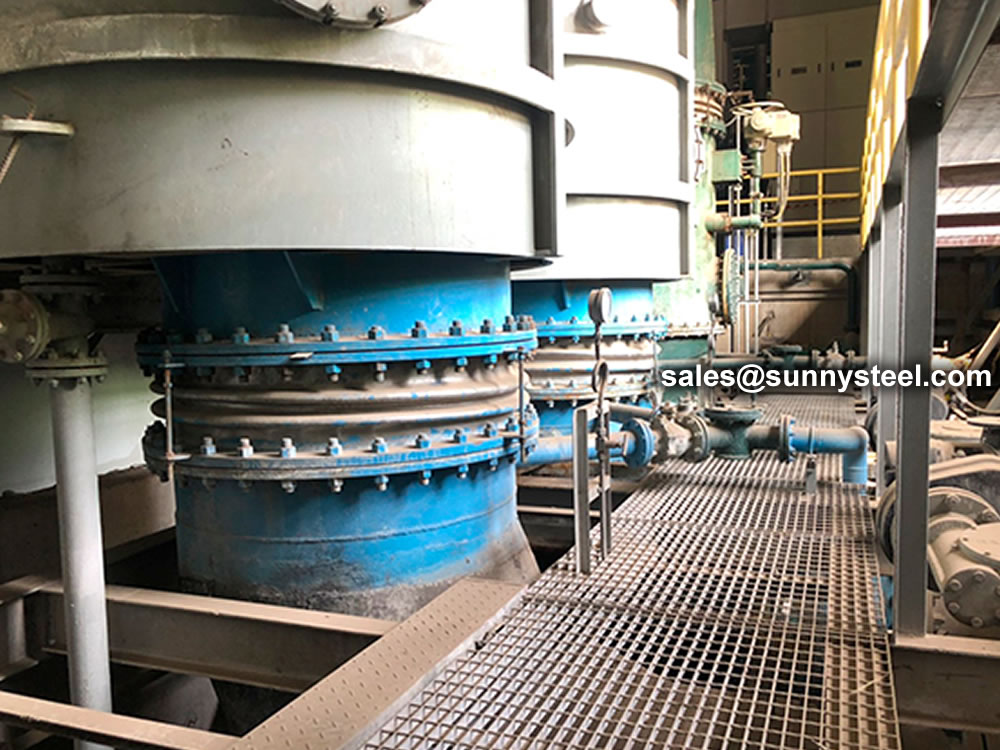
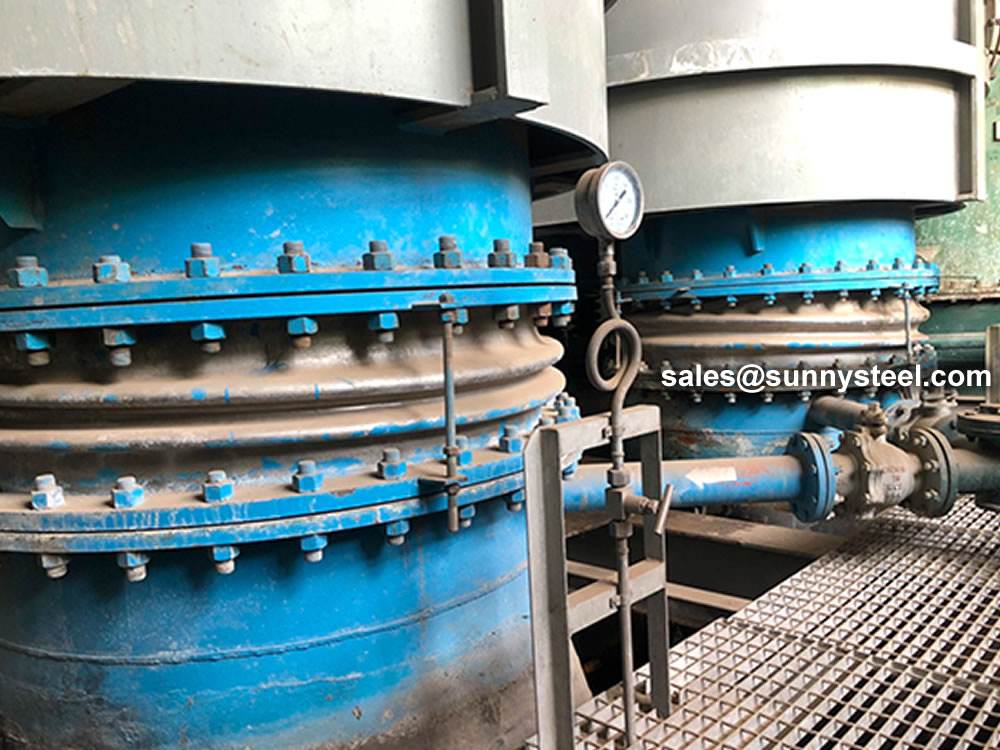
Tied universal expansion joints are frequently used to absorb lateral deflection in a “Z” bend configuration. The expansion joint absorbs the thermal movement ol horizontal pipelines as lateral defleclion. This can be accomplished in a single plane or three plane configuration. In a three plane “Z ” bend the horizontal pipes may lie at any angle in the horizontal plane since the tied universal expansion joint can absorb lateral deflection in any direction.
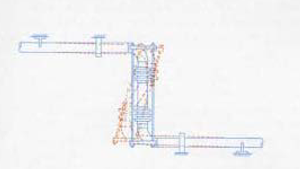
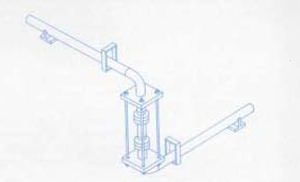
Expansion joints are used in all kinds of different sectors and in a huge range of different industrial contexts.
Specific industries that use expansion joints include the Energy sector such as nuclear power plants and district heating schemes.
Essentially, wherever there is a need to control pipework movement expansion joints are required. They are used in factories and power plants wherever thermal expansion needs to be controlled, such as pipelines that connect with condensers or power turbines. They are used in oil and fuel gas applications.
The Petrochemical industry on oil refineries, pumping stations and oil rigs.
Civil engineering, waste management, sewage treatment, recycling, water treatment, aerospace, aviation, defence, the automotive industry, agriculture, mining, metals manufacturing, food and dairy manufacturing and packaging, and so on.

When you partner with Sunny Steel, you can stop worrying about meeting deadlines thanks to our responsive and timely service. You'll also say goodbye to unnecessary shopping around. Instead, you'll get white glove service from an expert who understands your needs and can get you the materials you need quickly.
